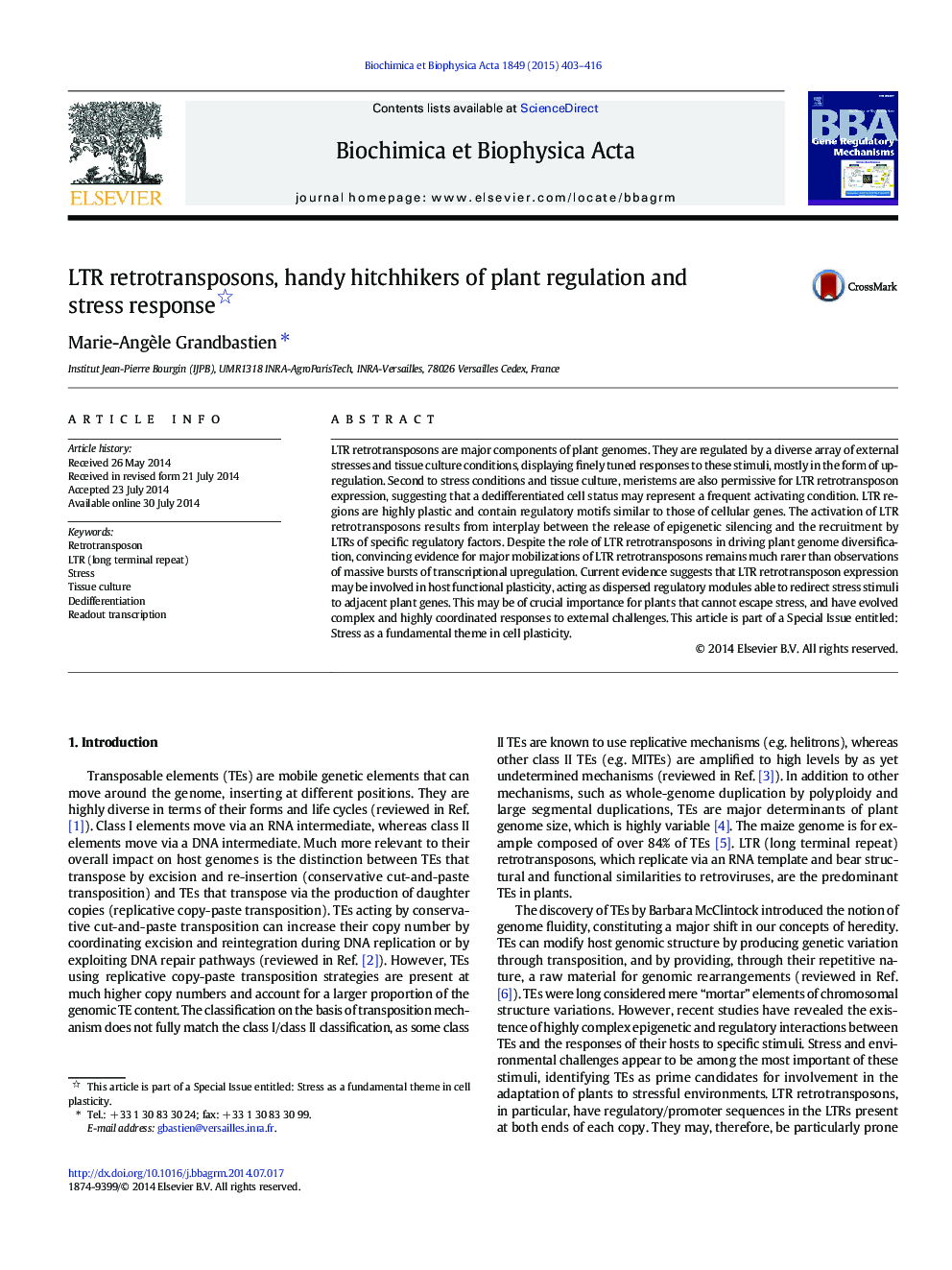| Article ID | Journal | Published Year | Pages | File Type |
|---|---|---|---|---|
| 1946416 | Biochimica et Biophysica Acta (BBA) - Gene Regulatory Mechanisms | 2015 | 14 Pages |
•Plant retrotransposons are activated by stress and tissue culture conditions.•This response is finely tuned to different host regulatory pathways.•Plastic LTR regulatory motifs and epigenetic regulations are the key.•LTR retrotransposons redirect their regulations to adjacent genes.
LTR retrotransposons are major components of plant genomes. They are regulated by a diverse array of external stresses and tissue culture conditions, displaying finely tuned responses to these stimuli, mostly in the form of upregulation. Second to stress conditions and tissue culture, meristems are also permissive for LTR retrotransposon expression, suggesting that a dedifferentiated cell status may represent a frequent activating condition. LTR regions are highly plastic and contain regulatory motifs similar to those of cellular genes. The activation of LTR retrotransposons results from interplay between the release of epigenetic silencing and the recruitment by LTRs of specific regulatory factors. Despite the role of LTR retrotransposons in driving plant genome diversification, convincing evidence for major mobilizations of LTR retrotransposons remains much rarer than observations of massive bursts of transcriptional upregulation. Current evidence suggests that LTR retrotransposon expression may be involved in host functional plasticity, acting as dispersed regulatory modules able to redirect stress stimuli to adjacent plant genes. This may be of crucial importance for plants that cannot escape stress, and have evolved complex and highly coordinated responses to external challenges. This article is part of a Special Issue entitled: Stress as a fundamental theme in cell plasticity.
